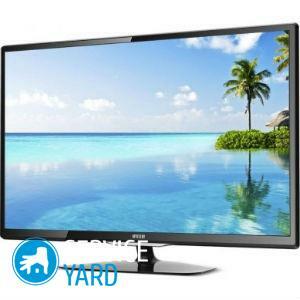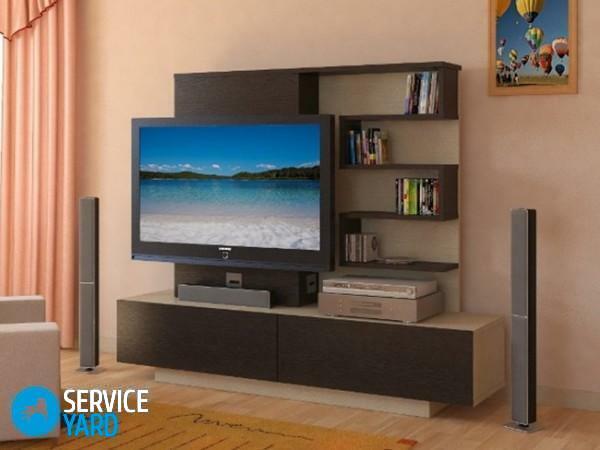
- What is the resolution of the TV screen?
- Screen Resolution Standards
- Which screen resolution is better for a TV?
- Useful advices:
For a modern person, TV is not only a source of all kinds of information, but a window to another world, as well as a way to spend time boring. Recently, modern monitors have turned into a complex and multifunctional device, with the settings of which it is not always possible to cope even with a certified specialist, what can we say about the average consumer. And when choosing modern TV receivers, the potential buyer is simply lost in terms of the latest technologies. Today we will acquaint you with the most important technical parameters of the technology and advise which resolution of the TV screen is better to choose in order to make the right choice among all the variety of devices.
to the contents ↑What is the resolution of the TV screen?
Display resolution is one of the most important criteria that buyers use when choosing a technique. This parameter affects the clarity of the picture. If you imagine embroidery with a cross, where each cross has its own color, and from all the various crosses you get a whole picture, and the smaller each cross, the more of them on canvas, the better the picture becomes. In other words, the more details, the clearer and better the picture.
And so with the monitor screen, only the role of crosses is performed by points, so-called pixels, and the role of the canvas is the display itself. On how many points fit vertically / horizontally on the screen, the clarity of the picture, its color, quality depends. That is, whether the picture will be bright, beautiful, clear, or will be grainy, blurry - for this and it is necessary to understand what resolution the TV screen is better.
Based on the above factors, it may appear that the more points( pixels), the better - this is not entirely true. In case the size of the real image will be much smaller than the display size, the quality will noticeably decrease and a decent picture can be seen only from a distance. Ideally, the format of the displayed material and the monitor should coincide. Therefore, we must choose which resolution of the TV screen is better, in conjunction with its size. Only so and nothing else.
Important! The resolution is determined by the number of pixels per inch. And the more the screen diagonal, the more the number of points should be horizontally and vertically, otherwise - the picture on the screen will be blurred and granular.
to content ↑Screen resolution standards
Modern standards are divided into two main ones:
- HD-Ready.
- Full HD.
The first is found in the technique with a small diagonal. The display format for such devices:
- 1366x768 near the LCD.
- 1024x768 near the plasma.

The second format with parameters of 1920x1080 pixels is found in high-definition displays, with a diagonal of over 27 inches, designed to play video of the same quality.
In the description of the device, the screen resolution is indicated by the number of lines, for example, 720 p, 1080 p, 1080 i. In this case, the Latin letters determine the type of scan:
- "p" - progressive;
- "i" - interlaced.
Important! In the interlaced scan, the display image is updated in two stages: each odd and even line is updated after 30 seconds, and the progressive scan updates the lines simultaneously every 60 seconds. Sometimes the screen resolution is denoted as HD and Full HD.
Since 2012 in the market of home appliances appeared models capable of working in Ultra HD format. This abbreviation became one of the most notable of today's trends. Supporters of the new quality of the picture claim that the superiority over Full HD is fourfold. Judge for yourself, Ultra HD has:
- Resolution 3840x2160 or 7680x4320.
- The color depth is 10/12 bit.
- Color coverage 75,8%.
- Progressive scan, 50-100 frames per second.
The performance of the new standard is really impressive. And it's not even a huge number of pixels in the telecast. This format implies a better signal. The video on the screen will contain much more information about the color of the picture. But unfortunately, the main problem here is the lack of content on such parameters. That is, there are still no movies, TV shows and video recordings created in the 4K / UHD format.
Important! Therefore, if you today decided to buy a TV with a similar format, then spend money on it is not worth it. By the time sufficient volumes of video materials are created in UHD, the cost of models with such capabilities will decrease.
to the contents ↑Which screen resolution is better for a TV?
Each format has its own advantages. But, it's necessary to decide what screen resolution is best for a TV set, from what source of signal you have. In particular:
- Screen HD-Ready - suitable for terrestrial, cable, satellite TV.This format is suitable for viewing DVD movies.
- Screens Full HD with parameters 1920x1080 - suitable for connecting game consoles for computer games, satellite TV channels and Blu-ray disc players. It should be noted that a home device of Full HD format can reproduce cable and terrestrial signal, but the image quality will be worse in this case.
Important! Traditional broadcast resolution is 720x576 pixels for PAL and SECAM standards, and for NTSC - 720x480.Therefore, the TV is trying to stretch the picture and create missing points from the neighboring ones. As a result - the picture is distorted and very coarsening, the proportions change.
to the contents ↑Useful advices:
- To know the resolution of the monitor, read the manual and find out all the technical characteristics of the product. You can consult with the seller, but the best option is to specify the information on the website of the manufacturer of the equipment.
- Please note that the output resolution of the image will always be equal to the lower resolution of the TV or video display. In particular, if you watch a DVD on a Full HD TV, then the image will be submitted with a DVD resolution, if you send a signal with a higher resolution than the TV, you will see the image with the TV resolution, since it is smaller.
It should be noted that the number of horizontal and vertical points in itself does not determine the quality of the image. Of great importance are other characteristics of the device, in particular: the features of the video processor, the characteristics and settings for the color gamut, contrast, screen size. Therefore, despite the characteristics recorded in the TV's passport, be sure to check the image quality and, first of all, on the content of the format that you will be viewing most often. Good luck and quality viewing of your favorite movies and programs!

